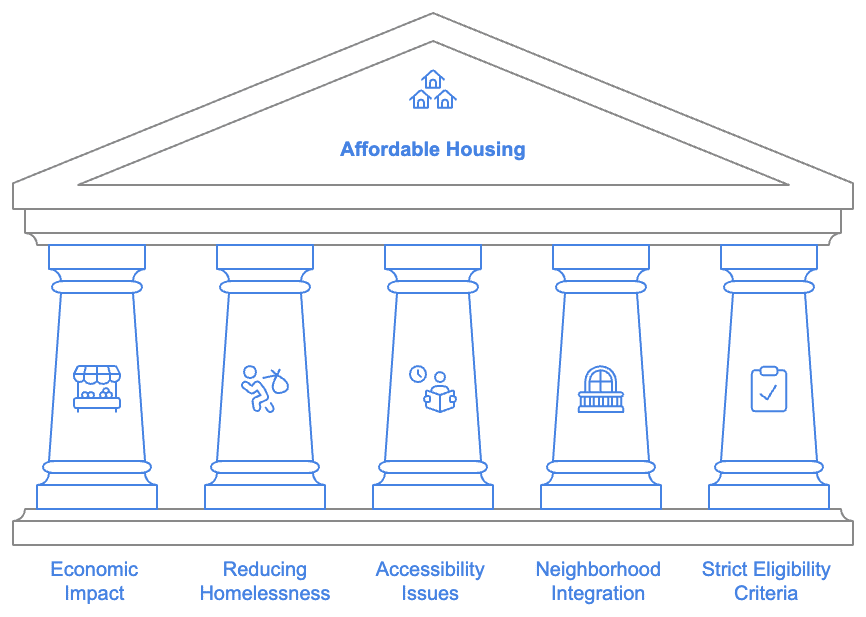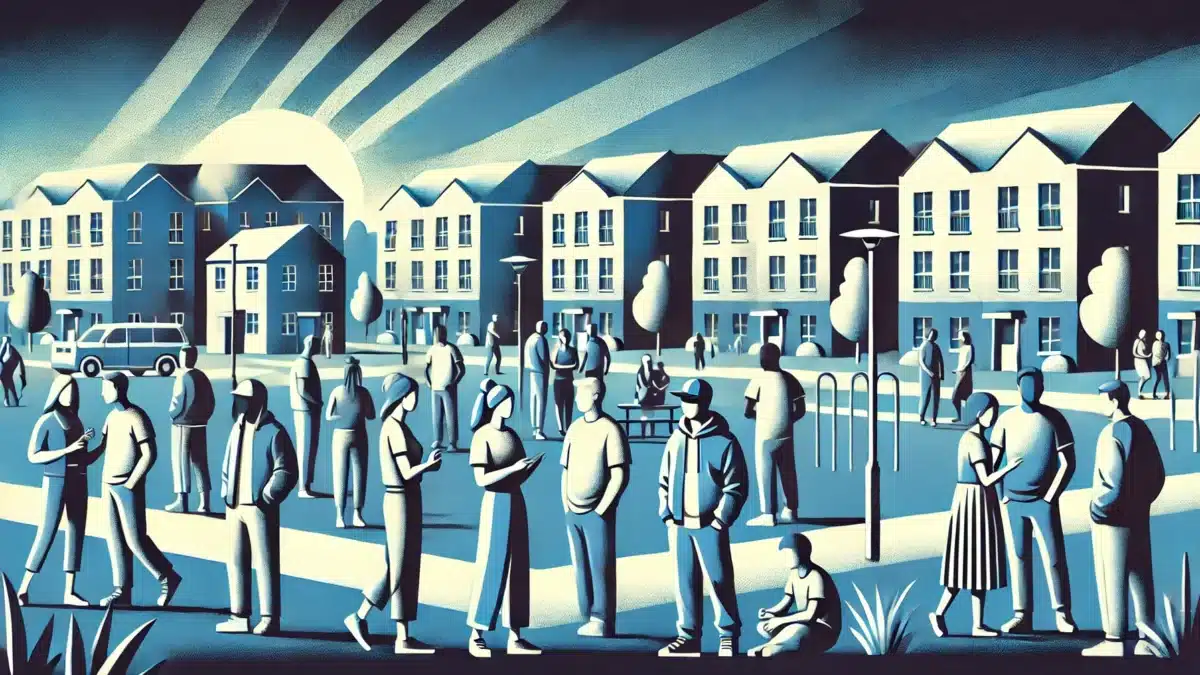
The Risks of Paying Rent with Apps: Pros, Cons, and Safety Tips
September 5, 2023
Don’t Get Tricked: How to Avoid Rental Deposit Scams
November 8, 2023Low-income housing is an essential part of the rental market, providing affordable options for individuals and families who may otherwise struggle to find safe, stable housing. Unfortunately, misconceptions about low-income housing persist, leading to misunderstandings that can impact everything from local policy decisions to community support. At Section 8 Shield, we’re here to clear up these myths and offer accurate information based on research, input from our readers, and insights from the housing community.
Why It’s Important to Understand the Realities of Low-Income Housing
Understanding the facts about low-income housing helps create a more informed and supportive environment for renters. These programs, like Section 8 and public housing, are vital to helping low-income families access secure, affordable homes. By busting common myths, we can reduce stigma and support efforts to make housing more accessible for everyone.
Common Myths and Facts About Low-Income Housing
Myth 1: Low-Income Housing Reduces Property Values in the Area
- The Truth: Studies show that well-managed, affordable housing developments do not decrease property values. In fact, research indicates that in many cases, low-income housing has little to no impact on neighboring property values and can even lead to increases in areas with high-quality, well-maintained affordable housing.
- Why This Matters: Misinformation about property values can lead to resistance to new affordable housing projects in neighborhoods that would benefit from them. Understanding this fact helps communities welcome affordable housing rather than fearing it will harm their investments.
Myth 2: Only Unemployed People Live in Low-Income Housing
- The Truth: Many people living in low-income housing are employed, often in essential jobs that serve the community. Low-income housing tenants include teachers, healthcare workers, retail employees, and other working individuals who simply can’t afford the high cost of housing in many areas.
- Why This Matters: People in low-income housing work in various roles, and recognizing this helps reduce the stigma that only unemployed people or those unwilling to work rely on housing assistance.
Myth 3: Low-Income Housing Leads to Increased Crime
- The Truth: The notion that low-income housing increases crime rates is unfounded. Studies show that crime rates are influenced by numerous factors, such as community resources and local policies, not the presence of affordable housing. Well-designed and well-managed affordable housing developments are not associated with higher crime rates.
- Why This Matters: This myth is often used to oppose new affordable housing developments, but the reality is that low-income housing can help stabilize communities and reduce crime by providing families with secure, stable homes.
Myth 4: Low-Income Housing Is Only for Single Mothers or Families
- The Truth: Low-income housing serves a wide range of people, including seniors, individuals with disabilities, veterans, and single individuals. Housing assistance programs are designed to support anyone who meets income and other eligibility requirements, regardless of family status.
- Why This Matters: Recognizing the diversity of people who rely on low-income housing helps dispel stereotypes and reinforces that affordable housing programs are there to support people in various life stages and circumstances.
Myth 5: Low-Income Housing Is Poorly Maintained and Unsafe
- The Truth: Many affordable housing units are well-maintained, safe, and comply with strict government regulations. While some properties may struggle with maintenance, this is not unique to low-income housing and can occur in any rental property. Public housing authorities and property managers are required to follow standards for safety and upkeep.
- Why This Matters: This misconception creates unnecessary stigma and makes people less supportive of affordable housing programs. Understanding the regulations around low-income housing maintenance helps correct this view.
Myth 6: Low-Income Housing Costs Taxpayers Too Much
- The Truth: While taxpayer funds support low-income housing programs, the benefits outweigh the costs. Affordable housing improves community stability, reduces homelessness, and can lessen the demand on emergency services, healthcare, and other taxpayer-funded resources by providing stable housing.
- Why This Matters: Affordable housing is an investment in community health and stability. By helping families avoid homelessness, we reduce the burden on other public services, ultimately saving taxpayer money in the long run.
Myth 7: People Living in Low-Income Housing Don’t Pay Rent
- The Truth: People in low-income housing are required to pay rent based on their income. Programs like Section 8 typically require tenants to pay 30% of their income toward rent, with the remainder covered by the housing voucher.
- Why This Matters: Understanding that tenants contribute financially to their housing reinforces the idea that affordable housing is not a free handout but rather a support system for people working to stabilize their lives.
Myth 8: Low-Income Housing Looks Like Run-Down, Old Buildings
- The Truth: Affordable housing developments today are often well-designed and integrated into communities. Many modern low-income housing projects focus on attractive, sustainable designs and are indistinguishable from market-rate housing.
- Why This Matters: This misconception can make neighbors wary of new affordable housing, assuming it will look unappealing or lower neighborhood aesthetics. Knowing that modern low-income housing is often built to high standards can reduce resistance to these developments.
Myth 9: Low-Income Housing Lowers the Quality of Nearby Schools
- The Truth: There is no evidence that affordable housing negatively impacts the quality of local schools. In fact, by providing stable housing to families, children in low-income housing are more likely to succeed in school, which can benefit local schools by improving overall academic performance.
- Why This Matters: Schools benefit when students have stable housing, as this reduces absenteeism and helps create a more consistent student body. Supporting affordable housing can contribute to stronger school communities.
Myth 10: Once in Low-Income Housing, People Stay There for Life
Why This Matters: Affordable housing programs are designed to help people achieve stability. Understanding that it’s not a permanent situation for everyone helps reduce the stigma and shows that affordable housing can be a stepping stone to financial independence.
The Truth: While some residents may live in low-income housing long-term due to age or disability, many others use it as a temporary support until they can transition to market-rate housing. Some families leave low-income housing as their financial situations improve.
Additional Facts About Low-Income Housing
Beyond dispelling myths, here are some important facts about low-income housing that everyone should know.

| Affordable Housing Supports Local Economies | Low-income housing enables people to live closer to their workplaces, which helps local businesses, reduces commute times, and contributes to local economic growth. Communities with affordable housing are often more resilient and have stronger local economies. |
| Affordable Housing Reduces Homelessness | By providing safe and affordable options, low-income housing reduces the risk of homelessness for people who may be on the edge financially. Stable housing supports overall community health and reduces the need for costly emergency services. |
| There’s Often a Long Waiting List for Low-Income Housing | Due to high demand and limited supply, many low-income housing programs have long waiting lists. This means that access to affordable housing is a significant issue in many communities, underscoring the need for more investment in affordable housing. |
| Low-Income Housing Can Be Found in a Variety of Neighborhoods | Affordable housing is not limited to specific areas. Many communities integrate low-income housing into diverse neighborhoods, allowing residents to live closer to work, schools, and public services. |
| Affordable Housing Programs Have Strict Eligibility Criteria | Access to low-income housing is based on income limits and other criteria, ensuring that support reaches those who genuinely need it. Programs are designed to help low-income families, the elderly, and individuals with disabilities. |
Supporting and Understanding Low-Income Housing
Low-income housing plays an essential role in communities, offering stability and support to individuals and families who need it. By dispelling common myths, we can help create a more welcoming environment for affordable housing programs, supporting efforts to expand access to safe and affordable homes.
At Section 8 Shield, we’re committed to providing accurate, reliable information about affordable housing and helping renters protect themselves. The more we understand the realities of low-income housing, the better equipped we are to support our communities and reduce the stigma surrounding affordable housing options.




